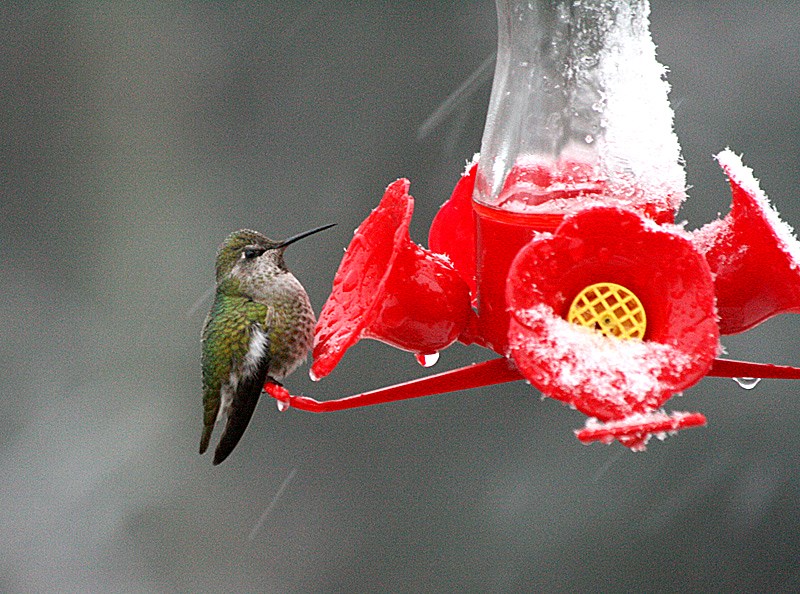Hummingbirds have become a winter staple for many Tri-City backyard birders, offering a blurred flash of colour to help get them through those often dreary winter months.
But it has not always been this way. Victoria Otton, a bird enthusiast with the , has been counting feathered friends every year going back to the 1990s during the annual Audubon Christmas bird count.
“When BMN began doing Christmas Bird Counts back around 1995, who would have believed we’d ever be counting hummingbirds in the wintertime?” she wrote to The Tri-City News. “Yet since 2008, these birds have appeared every year on our checklists, and their numbers have been shooting up each year.”
Some might consider their personal connection with their backyard hummingbirds the reason they keep coming back. But invariably, hummingbirds keep tapping on your window through snow and ice because they want a syrupy meal.
That can be a problem in January or February: Nectar can freeze, feeders can crack and, under the snowy conditions we’ve seen this week, your little buzzing friends can buzz off or, heaven forbid, .
With that in mind, here are a few tips to keep your hummingbird feeders from freezing.
INSULATE
Wrap something around the feeders to keep them from freezing. You can use towels, hand warmers or a scarf, or go to the hardware store and pick up the special tape known as lagging used to keep pipes from freezing.
You can also wrap Christmas lights around the feeders, which, in addition to keeping the ice at bay and the hummingbirds fed, will add a festive glow to your feeder. (Make sure they are outdoor lights.)
Note, red lights will do double duty (in the natural world, where hummingbirds sip nectar from flowers, red indicates a rich source of food). On the other hand, avoid LED lights as they don’t give off heat and so won’t keep the feeder from freezing.
PICK UP A WINDOW FEEDER
Window feeders, which stick to a pane, absorb the heat passing through the glass, and that can keep them from freezing.
MOVE THE FEEDER
In summer, you often want to keep the feeder out of direct sunlight but, come winter, the temperature is not warm enough to allow mould growth and the added sunshine might be enough to at least slow down the freezing process during the day.
Keeping the feeder out of the wind will also help lower windchill and prevent the nectar from freezing.
To shield your feeder from snow accumulation, look for a feeder with a protective dome on top.
A HEATED FEEDER?
A plug-in feeder can be pricey, and is only useful part of the year but if you love your Anna’s hummingbird and are willing to shell out, these might be for you. Also available are heating elements that connect to the bottom of a standard hummingbird feeder.
A LOW-TECH SOLUTION
Perhaps the simplest method to ensuring your backyard hummingbirds stick around through freezing weather is to simply buy a second feeder; then, you can rotate between the two so that the birds have access to an unfrozen sugary food source.
—
How did your hummingbirds fare over the latest cold snap?
We’d love to see your photos and videos. Send them along to [email protected].



